Dhamma Shringa Vipassana Meditation Centre, Part 4
Letter #34: I promise this is the final post for the course, and it's the best one! It explains why I chose to torture myself for 10+ days, the results being positive and unexpected. ✨
So what was the point of all this? I’ll do my best to explain my understanding of the liberation resulting from Vipassana meditation.
Life is full of misery. Misery is created from craving and aversion. When something good happens in our lives, we say “oh that was so lovely, I hope that thing happens again. I want to have this feeling again.” That craving can turn to clinging, a desperation that ultimately leads to misery. We can all relate to this.
Money comes in and you’re feeling secure, on top of the world. Your boss congratulates you on a job well done, and you’re flying high from their typically sparse affirmation. You have one delicious donut, so you reach for another so you can have that taste again. You start Day 1 of your beach vacation in Mexico, and think you’ve never been so happy, so relaxed. You fall in love and you’re certain the honeymoon stage will last forever.
But those moments pass. The feelings fade away. The money leaves your account. Your relationship reaches a bump in road and your boss starts being a dick again. And so begins the vicious cycle of craving those good feelings, those good moments. The craving turns into clinging. If you can’t have it, you can’t be happy. And so you experience misery.
On the flip side, when something bad happens in our lives, we say “that was awful, I never want to experience that again. I never want to see that person again.” The aversion turns to hate, and hate leads to misery.
Your friend disappoints you in a way you’re certain you’ll never recover from, and now you have a new enemy. Your accountant calls, letting you know you owe another $8,000 for taxes this year, and now you’re in a panic. Someone cuts in front of you in the line at the grocery store and your eyeballs shoot laser beams of disgust into the back of their head. You don’t get the job. You don’t get the scholarship. Your partner won’t stop leaving the bath towel in a wet clump on the edge of the bed.
Our aversion to these bad moments, these yucky feelings in life build up. We walk around, sluggish, waiting for the next person to wrong us, for the next bad thing to happen. Our minds, our hearts fills with hate. How miserable! And we’ve all been there.
Over time, these miseries build up in our bodies. At the subatomic level, our feelings of craving and aversion create chemical reactions in our bodies, resulting in sensations. The more misery we carry around, the more we manifest the same into our lives. We are not living a life of peace, happiness, and liberation. We become petty, looking outward at how the external environment affects us. We are not taking responsibility for our own reactions to the these events. By learning to remain equanimous to the sensations arising and passing in our bodies, we can retrain our minds to practice neutrality towards the events in our lives. We can free ourselves from compounding miseries by reminding ourselves of the universal law of nature—all things are impermanent, nothing lasts forever.
This too shall pass.
By liberating ourselves from misery, we learn the art of living. And once we understand the art of living, we may begin to embrace the art of dying. Understanding that, as human beings, we are also impermanent. We will not be here forever. Our partners, our family members, our pets, our best friends will not be here forever.
Sounds bleak, right? It’s not easy to read these words. But once you take a moment to let them sink in, there is relief in acknowledging for yourself that nothing lasts forever. The bad situation you’re going through right now, will pass. The victory you’re having right now in life, will also pass. And the earth will begin to turn.
The best thing we can do is learn to practice equanimity, neutrality towards the situations that arise and pass in our lives. By checking all those internal, subatomic reactions within our bodies, we remain calm. We create space for love, compassion, and happiness to flood in. We simplify.
During the morning meditation on Day 8, we were introduced to the meditation cells that, up until that point, were only options for the “old students”. I had already made up my mind that I was not interested in seeing these cells—I’d happily meditate in the comfort of my bed instead. But as I exited the hall, the volunteer ushered me into a group of other girls that were on their way to the cells.
“Do I have to?” Another language barrier I ran into as she replied “Yes, come try it”. We were led up some stairs, through parts of the compound grounds that we were not previously allowed to visit. We were heading towards the stupa, a beautiful gold pagoda situated at the top of the hill. I was excited to see the inside of this structure I’d been admiring from afar for so many nights.
We were led down a hallway that curved in a circle around the inside of the pagoda, lined with doors marked with a number. The men’s cells were on one side, women’s cells were on the other side. The Russian volunteer leading us gestured for me to enter room 33 (I believe), and showed me where the light switch was.
I had pictured a quiet but expansive, dimly lit space, where you’d sit facing a large gold statue of Buddha in the center, left on your own to meditate in peace. Instead the door opened to a tiny room of white walls and blue carpet. Maybe 6 feet by 4 feet, with a pillow for sitting in the middle of the room. You could sit there with the glowing LED bulb above you, or turn it off for complete darkness. There was a little ventilation in the door, but, other than that, no windows. Luckily, I don’t suffer from claustrophobia, but, honestly, these cells would’ve freaked most people out. There was a strong smell of the cell being freshly painted.
I did my best to calm my racing heart down—I’d only be in here another hour and 15 minutes. The volunteer told us we were to sit in the center of the cell, facing the wall in front of us which points towards the center of the pagoda. But, yeah right! If there are four walls around me, you better believe I will be sitting against one of them. I was ready to cut any corner for back relief.
I actually began to appreciate a break from all the noise in the meditation hall. The man that would immediately fall asleep and snore when the sessions began seemed to have cured himself. But, by Day 6, he was then replaced with a couple guys that were insistent on having a constant belching contest. I had read/heard about yogis that have the ability to experience the entrance and exit of spirits and ancestors through their belches and yawns, but these guys weren’t convincing anyone. It was nearly impossible not to judge them and their lack of awareness. And by Day 9, some of the guys began passing gas, freely, without a care in the world. Why was the women’s side so much…less gross?! I can’t 😑.
Anyways, I continued to focus the best I could in that creepy little cell. I treated myself to a couple cobra and child’s poses to relieve my stiff body. All of a sudden, as happens often in Nepal, the lights cut out. I was a little freaked out, waiting to hear a scream from a fellow student, or for the volunteer to come running down the hall to rescue us from the pitch black rooms. But nothing happened. And so I did my best to embrace the darkness and refocus. When the lights finally came back on, I realized I liked it more with them off, so I elected to sit in darkness for the remainder of the session.
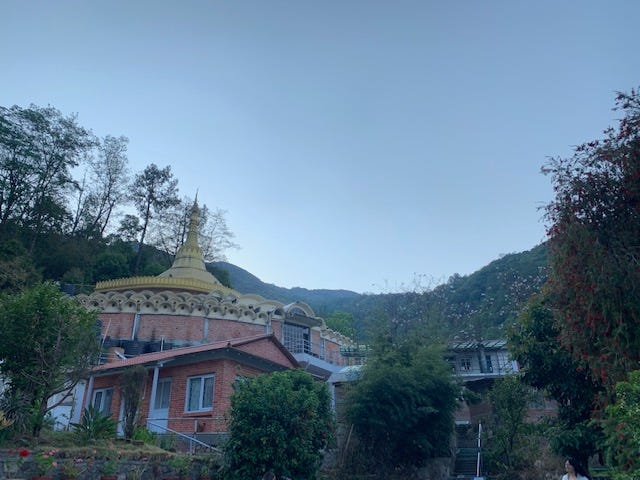
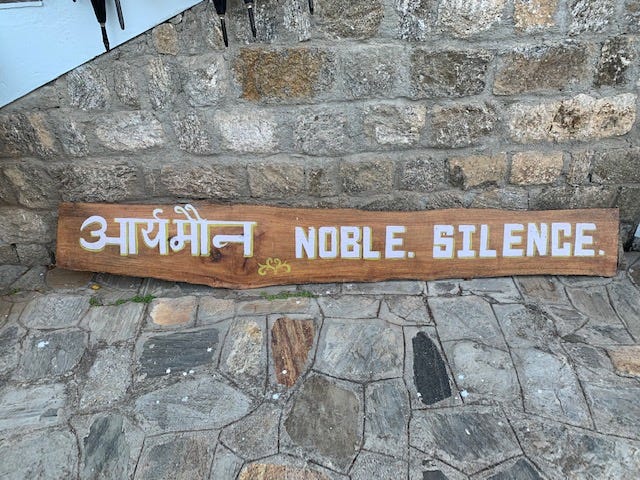
In the afternoon of Day 8 I caved in and asked for two pillows to prop up my knees. My lower back was no longer recovering each day, and I felt like I had constant menstrual cramps pulsating through my back.
The discourse the previous evening spoke of the importance of devotion. Another spiritual topic I have yet to fully resolve for myself, but I decided to re-commit my devotion to myself, to the energy and life within me, my connection to the universe, subject to the law of nature—my own impermanence. This too shall pass.
I had figured out during the afternoon meditation on Day 8 that I have an A-list roster of offenders (people who have hurt me in the past). Bullies or manipulators that, I was certain, were put on this earth for no other reason than to make the lives of others miserable. There are about 5 people on that list. And then there is a B-list roster. Their offensives are much more minor and cross my mind less frequently. That B-list is much longer.
While I’m sure the benefits of Vipassana vary from person to person, one nagging benefit keeps showing up for me that I’m not yet ready to embrace. I’m not ready to let go of my anger for the people in my life that have hurt me. I’m not ready to develop feelings of compassion towards them. And, while I’m all for finding tools for self-improvement, and I want to give Vipassana a fair chance, I’m not ready to forgive and forget the names on those rosters.
But something interesting happened during the last meditation session that evening, on Day 8. I could still easily conjure up the names on the A-list roster, repeating them like Arya Stark repeats the names of her enemies over and over in Game of Thrones (but without all the gore). But when I got to the B-list, I could only recall 1 or 2 names, and then my mind would draw a blank. The space I had been holding for those that had committed minor offenses was beginning to fade away.
The negativity was leaving my body. Even if I wasn’t ready to let go of it all, a change was occurring. The smaller, pettier angers were dissolving.
This was a small victory that I had to remember not to cling to—that my anger and hurt will ebb and flow. Sometimes back in full force, other times on the back burner as I continue to lead myself out of misery.
On Day 9, I was in full-blown rejoice mode that it was the final full day of the meditation schedule. Tomorrow we’d break Noble Silence and learn a new type of meditation called Metta—a way of sending love and compassion to all beings.
I fell into such a deep sleep during my 7am nap that day that I missed the 8am bell. I woke up suddenly aware of the how quiet the surrounding environment was, when it occurred to me that the dorm room was empty. I rushed down to Dhamma Hall, as Sofie frantically gestured for me to get my shit together.
I was 5 minutes late to the group meditation, of which we are not supposed to be late nor leave the room early (the assistant teachers participate in these sessions as well, so it is important to respect the gathering of everyone together). It was my first offense in the entire 9 days, so I settled in quickly and committed to having a perfect session in order to make up for my tardiness.
I had cheated that day and took some Ibuprofen to see if I could give my back some relief. It worked—I still had some pain but I was able to sit still and observe the sensations without moving. The meds had kicked in by 9am, right when Goenka gave us a new method to practice. We were to observe the inside of the body, piercing with our minds from back to front, left to right, passing through organs and muscles, observing our inner sensations. This intrigued me so I decided not to go back to my room for the remainder of the meditation session, opting instead to stay in the hall and get to work.
And I finally experienced my first big breakthrough. I was easily detecting the most subtle of sensations inside of muscles, throughout my organs, while remaining aware of the pulsation of my heart. The only area where I experienced a blind spot, a lack of awareness of a sensation, was my right thigh.
I still struggled to sit through until 11am, but this new method kept me focused and I was beginning to experience the flow of vibrations in my body.
When the bell sounded for lunch, I maintained concentration as I walked to the dining hall. I could feel the muscles of my feet gripping my shoes. My eyes felt the brightness of the sun. My heart kept pumping, and my lungs took in the refreshing outdoor air. As I was waiting in line for food, I could feel the cold metal plate against the skin of my hands. The recognition of all these physical sensations—I realized I’d never been so in tune with my body. And eating…it was so strange! I was so distracted by the sensation of chewing, the food passing through my esophagus and warm against my lips, that I was barely aware of the taste. I became emotional as I found this new interest in the inner workings of my body that have been with me for 37 years. It was so simple—they had been there all along but I’d never paid any mind to the subtleties of the atoms working to keep me alive and moving.
And, yet, I remembered that Goenka warned us not to develop a craving for these sensations, for the good feeling of the vibrations. That these feelings will pass, and I needed to refocus on maintaining equanimity towards the observation of my sensations.
It took me 9 miserable days to reach this breakthrough, so it was difficult not to celebrate. But at least I had a better understanding of what we were working to achieve, and now I had only one more day and a half to observe the impermanence of the flow of vibrations, as well as the pain and struggle. I was curious what other past miseries or emotions may surface during my remaining time here.
I was oddly energized after my breakthrough and less focused on getting a nap, so I decided to clean up our dorm room again after lunch. I did so with a smile on my face, and relaxed in my bed for the remainder of the break.
I happily concluded Day 9, ready for the change in schedule on Day 10. That morning I bounded down to the 4:30am meditation with an extra pep in my step. After breakfast we gathered for a morning discourse that would teach us about Metta meditation. We would add this technique at the end of every session, spending a few minutes to send love and compassion to all beings. Using the flow of vibrations that we’d generated through Vipassana, Metta gave us a chance to wish ourselves happiness, peace, and liberation.
There was a lightness around Day 10 as we began the 8am meditation—the end was near. Come 10am we’d break our silence. I committed to focus during that session, and enjoyed using the energy from my inner work to send love out across the room, out across the city, and all the way to my loved ones back home.
When we were dismissed from the hall at 10am, I wasn’t sure if I was ready to enter the speaking world yet. I lingered in my seat a few moments, as I heard an eruption of chatter outside the hall. My heart was racing as I stood up and made my way outside. The Nepali volunteer was waiting at the bottom of the stairs with a huge smile on her face. She said “Namaste” to me with a bow of her head, her hands pressed together in a prayer. I smiled and said “Namaste” back—the tears began to well in my eyes. I was overwhelmed and emotional, exiting the bubble of isolation within my own mind.
I wandered over to the stone wall along the garden and took a seat by myself. Eventually, Roberta, a student from Italy, came over and joined me, cajoling me to speak with her gentle “hi.” I smiled and said “hi” back, happy that someone else started the conversation for me. We slowly began to ask each other how we were feeling after the course, sharing immediate reflections on breaking our silence. Pretty soon other foreign students came over, and we all began sharing about our experiences.
It was such a surreal feeling—I had lived with these women for the past 11 days, and, even though we hadn’t been able to speak, I felt very safe and comfortable with them.
Miriam from Australia, and Hayley, the Californian turned Italian, are among two of the women I spoke with more extensively on Day 0 before Noble Silence began. Seeing them now on Day 10 was like seeing an old friend again, each of us sharing big smiles and checking in on one another (we weren’t allow to have physical contact yet). Some of us expressed how desperately we needed a hug, and I promised to give out hugs the minute the course ended the following morning.
Time flew by. We were late to all of the scheduled events that day. No one wanted to be alone—we hung out in the rooms together, followed each other around the grounds, and made plans to hang out in Kathmandu together the following day.
After lunch we were shown a documentary called Doing Time, Doing Vipassana. It chronicles the story of how India’s newly elected, first female Inspector General, Kiran Bedi, introduced Vipassana meditation as a way of reform for the officials and their violent and oppressive ways of dealing with the inmates of one of India’s toughest, most heavily populated prisons—Tihar Jail. After introducing the technique to the officers and seeing success in the changes that were made, they decided to open up Vipassana courses to the despondent inmates.
Goenka led the first 10-day course for the inmates, living at the the prison in order to complete the course alongside his students. At one point, when some inmates were brought to the course with handcuffs and chains at their feet (due to being a high risk for violence), he demanded the chains be removed, declaring how could he be expected to teach his students when they are in shackles? His compassion for and understanding of the human spirit is boundless.
The first course proved a success, so the team continued holding the courses in a massive way, later hosting the largest 10-day course of 1000 inmates.
The technique helped these men develop hope for the future. It changed the way they treated each other, it changed their interactions with the guards, and it changed the way they behaved once they were let out of prison. The film concludes with officers and inmates in an embrace.
I was in tears by the end of the film, as it further solidified how much love and kindness these individuals practicing Vipassana had in sharing it with others (specifically S.N. Goenka and Kiran Bedi). The story was beautiful.
And while I’d recommend for EVERYONE to watch this film, I was grateful I hadn’t seen it until the final day of the course. It hit close to home—the schedule and lifestyle we had during the past 10 days was mirrored by the inmates’ course in the film. I think it was jarring to feel like I was momentarily relating to India’s most notorious prison. So, if you are considering applying for a 10-day course, wait on seeing this magnificent documentary.
Kiran Bedi helped change the perspective of many of the officers and how they treated the inmates, and one of the superintendents, Tarsem Kumar, shared the below message from her:
“There is a thin line between us as officers and those inside. We have also made blunders in our life, but thank God we are not inside. But, unfortunately, they are.”
This message reminds us that we all have bad thoughts, dangerous thoughts. We have all gotten so mad we may have wanted to inflict harm. We may have been so desperate we wanted to steal from someone. The line is thin between those who act on those feelings, and those who do not. There is very little difference between us as human beings.
“Judge not, lest ye be judged.” And, my personal favorite, “there but for the grace of God go I.” I am so lucky, so fortunate to never have hurt someone and ended up in prison. Or dealt with a mental illness that led me to life on the streets. Or battled the disease of addiction. We are not so different from one another—some may have more luck than others. And it is our duty to practice compassion and empathy, lifting one another up as much as we can.
The rest of Day 10 was a wash. I couldn’t concentrate during any subsequent meditation sessions. I was too busy laughing with and getting to know my new friends. I was so grateful the teachers gave us this day to connect with one another and ease our transition back into the real world.
I decided to take the 7:30am bus on Day 11 back to Kathmandu with a handful of friends—Romina & Mirthe from the Netherlands, Miriam from Australia, Silvi & Orli from France, and Gabriela from Argentina. They were all staying at the same hostel, the Yakety Yak, and, since my flight wouldn’t depart until 1:20am the following day, I decided to follow them to the hostel, drop my bags, and enjoy my newfound freedom in the city.
I hardly slept a wink on Day 10. I had repacked all my things, pulling out a bunch of extra stuff to ship back home (I had collected too much gear from the ABC trek, and bought too many charming, handmade souvenirs in Pokhara 😅). I knew I’d have to rush the following morning to pick up my valuables from the front office, snap some pics of the grounds, and have a final breakfast with my friends before catching the bus.
We had our last 2 hour meditation at 4:30am on Day 11. My heart just leapt as I remember this final story.
I did my best to focus during the meditation, but inevitably my mind raced as I was excited to embark on my next adventure. I completed several body scans, becoming more and more comfortable with how to use my mind to penetrate through my muscles and organs. When Goenka began the Metta meditation, my heart was so bursting with love for everyone in that room, I zeroed in on his words. He repeated each line three times:
“May I be happy, may I be at peace, may I be liberated.”
“May all beings be happy, may all beings be at peace, may all beings be liberated.”
And then he switched it up.
“I pardon, I pardon, I pardon all those who might have hurt or harmed me, knowingly or unknowingly, consciously or unconsciously, by their deeds of body, speech or mind.
"I seek pardon, seek pardon, seek pardon from all those whom I might have hurt or harmed, knowingly or unknowingly, intentionally or unintentionally, by my deeds of body, speech or mind.
"All are my friends, none is my enemy; all are my friends, none is my enemy.
"May all share my peace. May all share my harmony. May all share my merits. May all share my Dhamma, Dhamma, Dhamma. May all be happy, be peaceful, be liberated, liberated, liberated."
My eyes began to well up. The words I couldn’t say for myself, he said for me. I wasn’t ready to let go of the anger I have for the people who’ve hurt me—that A-list roster—but his muttering of those words gave me the permission I needed to begin letting it go. And I couldn’t hold back the tears. In the last 5 minutes of that impossible 10 day challenge, I finally realized why I was there.
I began to soften. I began to feel only compassion, the heat of my anger slowly evaporating.
The course had ended. I drifted out of that room on a cloud of elation. I packed my things, grabbed my phone, said bye to the friends I wouldn’t see again, and exited the compound.
And so began one of the best days of my life. The love I had in me, my happiness, the closeness I felt to all these women who had suffered through it with me…it was 1000% worth it.
Several of the women claimed, without hesitation, that they planned to complete another 10-day course in the future. We were advised to practice Vipassana meditation for 1 hour in the morning, 1 hour in the evening, and attend at least one 10-day course per year. I knew I needed a break before I could decide how I’d continue my practice.
There was a Nepali woman there, dressed like a monk, that was on her 13th course. Another group of what the assistant teachers called “serious students” were beginning a 60-day meditation course as we were leaving. 😳
In the next post, I’ll share about our girls’ day in Kathmandu and my arrival in Palestine on April 24th. But I wanted to explain how I reached the state of becoming a warm little PopTart at the airport that evening of Day 11. I knew something had changed in me. I felt like a weight had been lifted, and in flooded light and love. When I finally had a chance to FaceTime my parents, I shared as much about the experience as I could in a short period of time, and of course that opened the floodgates again 😭. My dad expressed that he could tell my countenance had changed. Something was different about me.
I didn’t go into Vipassana with an intention. I didn’t know what I was looking for. But I had found it—relief, love, patience, boredom, compassion, focus, strength, simplicity. And yes, after a few days away, I now know with certainty that I will complete another 10-day course again in the future. Who’s with me? 😆
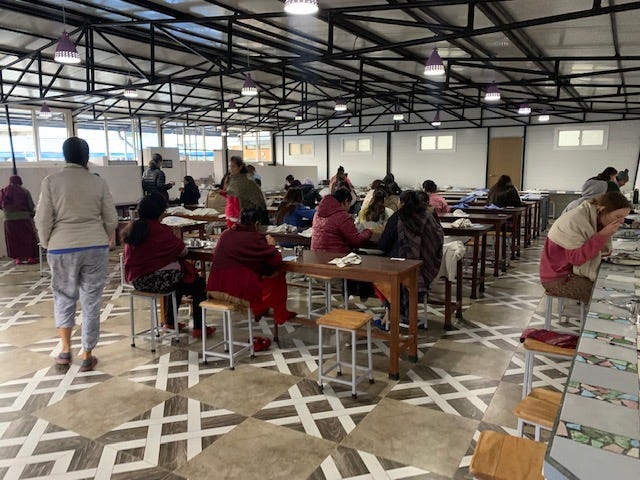
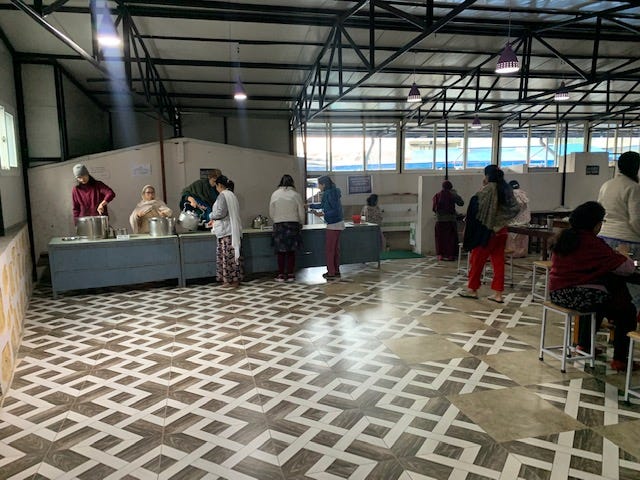
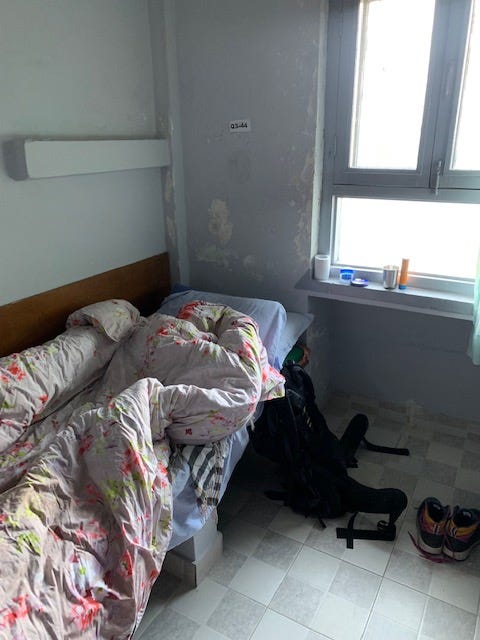
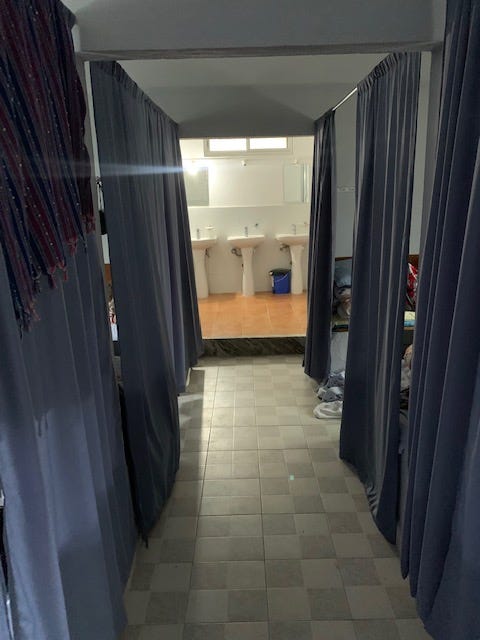
Hey! Would you like to connect over creativity, self-growth, and problem-solving? Or just to have a virtual glass of wine or mocktail? Please book a time on my Calendly for us to chat! I can’t wait to see you. XOXO.
If you’re enjoying On the Road, please share with others who you may think would enjoy as well! As always, I love reading your comments and feedback. If you're not already subscribed, please click the button below so I can continue sending you weekly-ish stories and lessons while I travel. 🚙




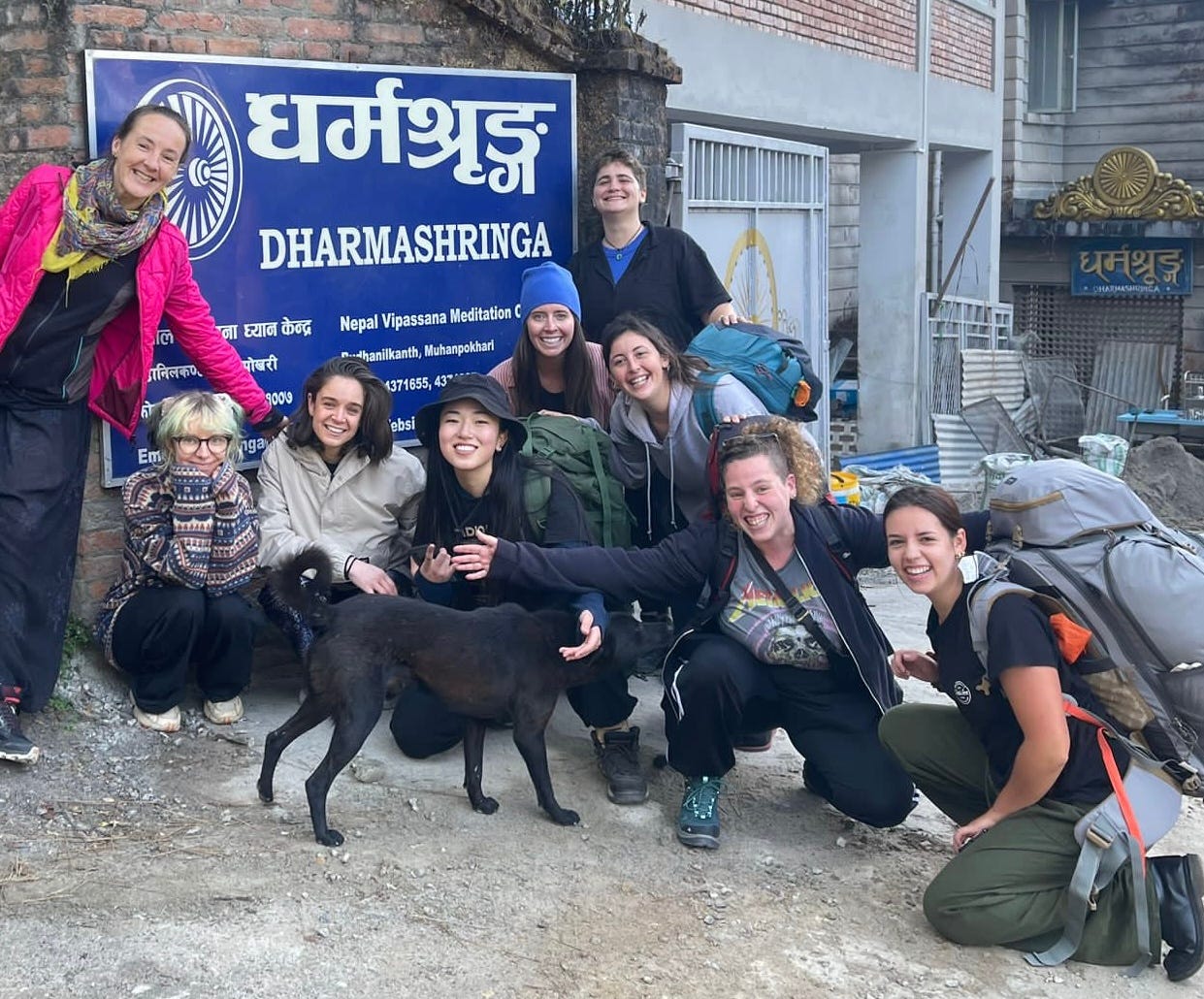
What a challenge, what bravery and strength! Thank you for sharing this incredible journey!
Wow! This was emotion-packed! You have the best descriptions and make me feel like I was there too. I even feel my back hurting from no support for soooo long!😆 Interesting how something so miserable for you turned out to be so good for you. What an incredible experience!